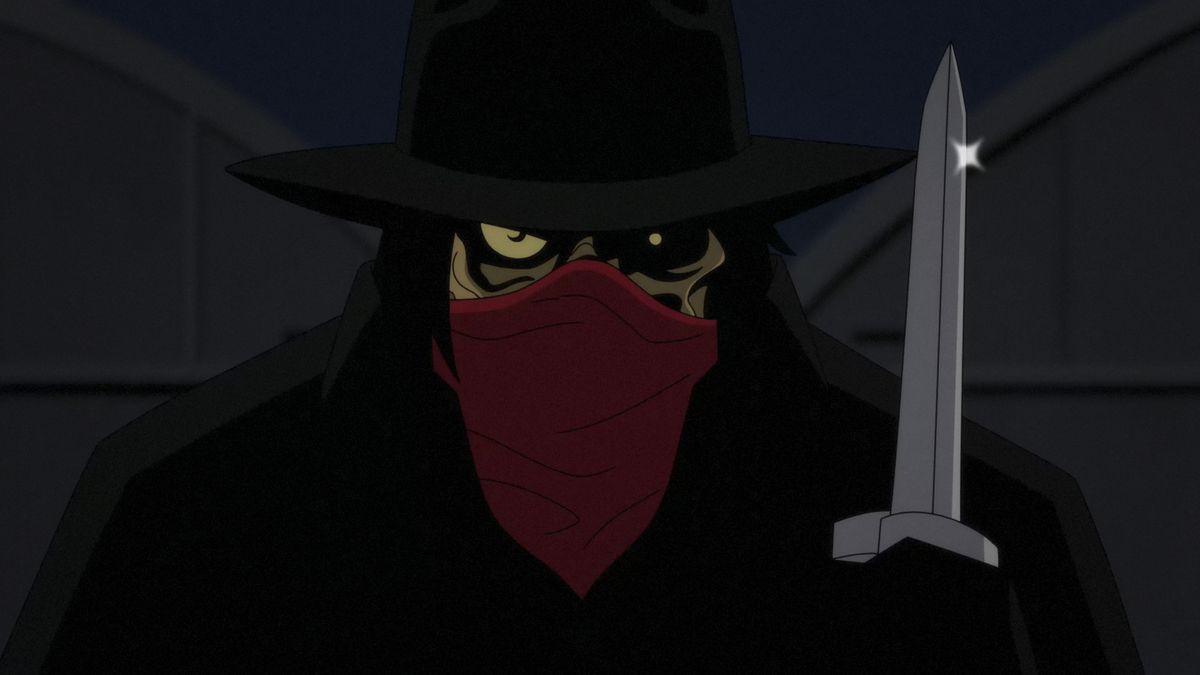
2024-08-03 08:05:01
It was about 10 minutes into the second episode of Batman: Caped Crusader that I realized something was wrong. Renee Montoya, Gotham police detective and skeptical investigator of both The Batman and his enemies, was piecing together the origins of villain Clayface, a faded Hollywood idol whose features are hideously warped in an attempt to preserve his impeccable appearance. Mind you, there wasn’t anything wrong with the writing in the scene, which was sharply composed by longtime comic writer Greg Rucka, and had enough plucky repartee and hardboiled flavor to do justice to the cartoon’s vintage noir atmosphere. Nor was there any issue with the animation — as smooth as one would expect from the better efforts of latter-day Warner Bros. — or with the largely solid voice acting.
It’s just that every time I thought closely about any of those things, I couldn’t help but be reminded of another, decidedly similar, version of this story: one broadcast 32 years ago during the debut week of Batman: The Animated Series. It was a strange, surreal kind of time warp: the episode was new, but the memories and emotional associations were all plucked straight from my own 6-year-old self, staring wide-eyed as animated thugs poured body-altering chemicals forcibly down the soon-to-be supervillain’s gullet. The scene I was watching was set in the 1940s, but everything about it screamed 1993.
Batman: Caped Crusader is the work of Bruce Timm, the same animator and producer who was the driving force behind Batman: The Animated Series three decades ago. To say that the new series began as a labor of love for Timm would be something of an overstatement: in an interview with Empire Magazine, Timm explained that the project had its genesis with an explicit request from Warner Bros. to do a revival of the ’90s series, a premise Timm initially resisted.
Only gradually, and when Warner proved open to reconceiving, rather than merely resuscitating, the earlier series did Timm become amenable to playing his greatest hits again, explaining, “It turned out there actually were a lot of things that, the more I started thinking about back on, it was like, ‘Oh yeah.’ I had a completely different idea of what the world was like and what Batman himself was like.” Charitably, then, the show represents a chance for Timm to reimagine his earlier effort in light of both his evolved conceptions of Batman’s universe, and the presumably more mature audience outside the confines of network TV. Somewhat less charitably, it’s Bruce Timm taking a mulligan — and he’s not alone.

Image: Prime Video
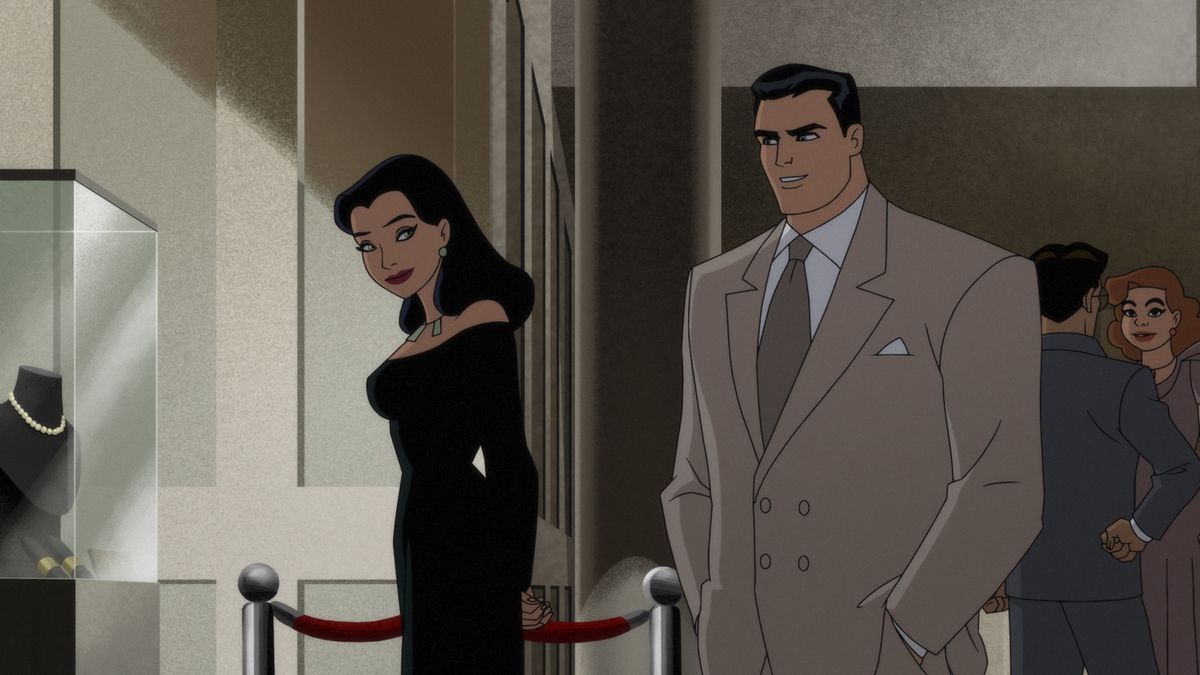
Image: Prime Video
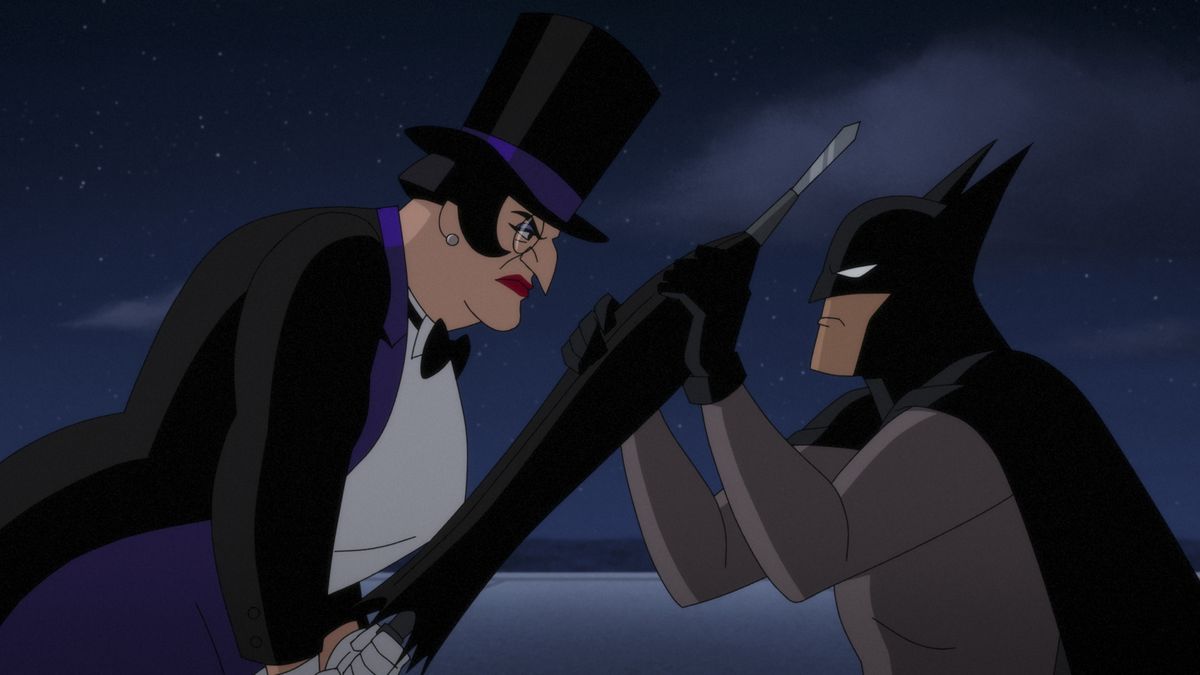
Image: Prime Video
The years since Batman: The Animated Series have had their peaks and valleys for Timm: first, the historically good (and still beloved) run of series that collectively formed the so-called DC Animated Universe, beginning with 1996’s Superman: The Animated Series, and continuing through a string of bangers that encompassed Batman Beyond, Justice League, and finally, brilliantly, the capstone effort of 2004’s Justice League Unlimited.
Since then, however, the trajectory has been notably less steady. After overseeing an uneven slate of DC original animated films for more than a decade, Timm returned to the character that made him a star with the 2017 straight-to-video animation Batman and Harley Quinn — an ostensible revival of B:TAS so offensively, off-puttingly out of step with both the humor and spirit of the original series, one might have been forgiven for wearily concluding that Timm had lost his touch. Bruce Timm, in other words, was a man in need of some redemption, and where better to find it than the character and franchise with which he’s still most associated, and which his lingering fans are sure to hold closest to their hearts.
It would be nice to say that Timm’s prediction has been borne out, and that Caped Crusader really does represent a more aware, mature conception of its title character. It is with a sense of deflation that it must be said this is not so. There are glimmers of greatness, to be sure — the show’s slow-burn depiction of Harvey Dent in particular, as he evolves from smarmy, egotistical D.A. into an inevitable supervillain is a particular highlight.
But for the most part what we have here is a slightly smarter, slightly slower, but much less interesting version of Timm’s ’90s masterpiece. Sometimes the changes are legitimately boundary-pushing (frankly incorporating the queer sexualities of both Harley Quinn and Renée Montoya, for instance, in ways that would have been verboten by ’90s network censors). Other times, they’re baffling (a female Penguin in the show’s premiere episode is an unusual change of pace, but one the creators largely neglect to make any narrative use of). But more often than not, the show’s much-vaunted maturity amounts to nothing more than decoration; the same kids’ cartoon still dressing up in a grown-up Batman outfit after all these years.
Of course, Caped Crusader doesn’t exist in a vacuum: on the contrary, it’s a part of a long string of ’90s-centric animated reboots and reimaginings designed to tap the vast wells of nostalgia (and somewhat less vast wallets) of uncomfortably aging Millennials. A non-comprehensive list from the past five years would include nostalgic staples Animaniacs, Tiny Toon Adventures, Rugrats, Duck Tales, Beavis and Butt-Head, and Powerpuff Girls, with more either planned, aborted, or mysteriously vanished. But for superhero fans, the most prominent by far is surely X-Men ’97, the continuation of the top-rated series of Saturday morning ’90s TV, which provided Disney Plus (and maybe Marvel Studios more generally) with its biggest popular success in years.
Setting Caped Crusader next to X-Men ’97 creates an interesting study in contrasts, since the two shows are in some ways inverses to one another. While Caped Crusader is an ostensibly new Batman concept fashioned by a set of familiar old hands, X-Men was designed as a conscious extension of the lore and continuity of the original series, albeit conceived and written by a totally new, and younger, team of writers. Perhaps it was because of that generation gap, and the difference in perspective that emerged from it, that ’97 initially seemed poised not only to challenge the assumptions of its older sibling but flat-out condemn them.
The show’s most celebrated episode, “Remember It,” in which government-sponsored sentinels annihilate the mutant population of the island Genosha, is a stark and brutal depiction of the costs inherent in Xavier’s Clinton-era dreams of assimilation and tolerance. And yet, for all the promise inherent in that setup, the show’s closing half worked swiftly to double back on all of its steps forward. By the close of the season, Xavier had been reestablished as unambiguously heroic, Magneto (formerly an intellectual force to be reckoned with) had reverted to full-on sneering villainy, and the status quo of 1997 had been happily restored.
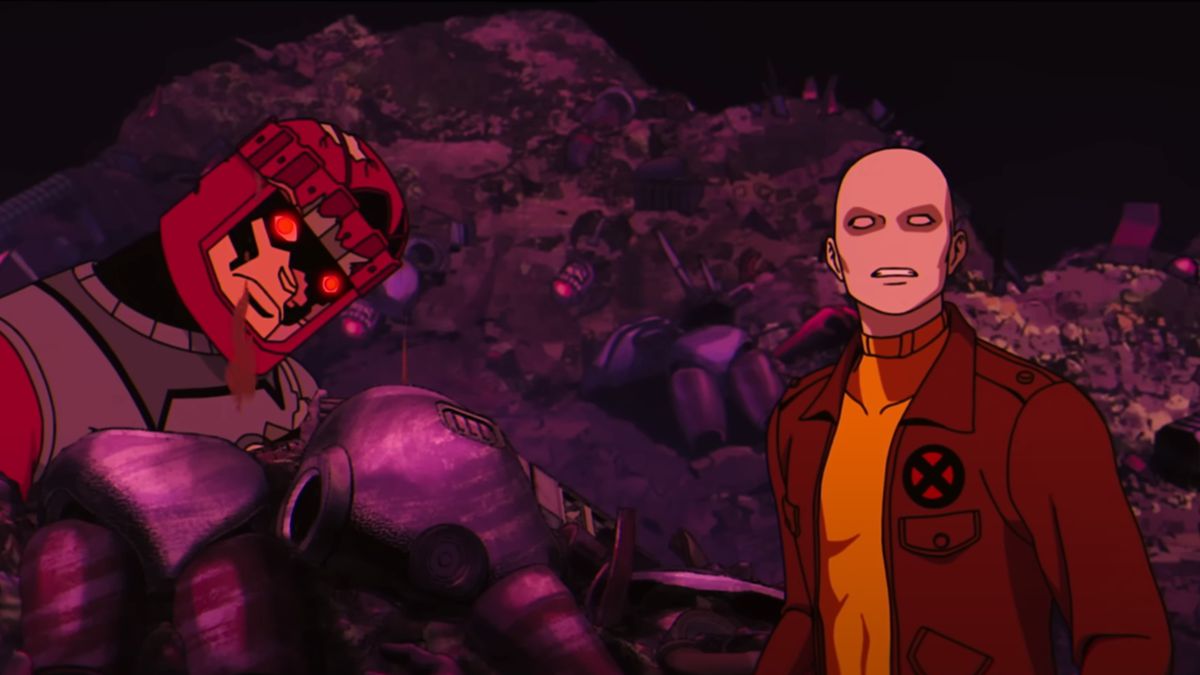
Image: Marvel Studios Animation
I bring up X-Men ’97 not because I didn’t like it, but because I absolutely did. That’s the thing that worries me. When I look back honestly at my earliest experiences engaging with these shows as a kid, I realize that comfort was never the emotion they were designed to evoke. Batman: The Animated Series was a deliberately unsettling series; animated, famously, on black backgrounds, the better to evoke the midnight atmosphere of a city crawling with rats after dark. Its best episodes were designed to unnerve as much as to thrill: the tortured melancholy of a Mr. Freeze or a Two-Face, sympathetic enough to leave open the question of whose shoes young viewers ought to be imagining ourselves in. So when a show like Caped Crusader dutifully recreates the same tones and plot beats we remember from 30 years ago, it doesn’t come off feeling like the cozily familiar mythology it’s supposed to be. It just feels like a whole culture deciding to perform its own greatest hits collection instead of writing any new songs worth singing.
This tendency toward ’90s revivals isn’t confined to animation, of course. The cycle of generational pop culture nostalgia has been with us for decades, and shows no signs of abating. But the trend feels especially pernicious in the case of cartoons, designed as they are to play on the chords of our youthful innocence like a schmaltzy lounge singer.
Pernicious, but not surprising. The past decades haven’t always been kind to Bruce Timm, but they haven’t been kind to the rest of us either, what with the endless, dreary march from George W. Bush, to a historic economic collapse, to the surreality of the Trumpian takeover years. No wonder we’ve spent the past decades looking culturally backward to our childhoods again and again.
In a strange sort of way, it’s a parallel to the fate of the Batman franchise over the past 20 years, which has found itself repeatedly returning to the well of the character’s familiar and appealing origin story. There was the 2004 cartoon The Batman (the first since 1993 to try and break out of the Timm-era ongoing continuity), which again restarted Batman from his first days on the job. Then came Christopher Nolan, of course, with his back-to-basics recapitulation in Batman Begins. And only two years ago, director Matt Reeves did it all over again with The Batman, to nary a word of filmgoer complaint (net profit: $177 million by official tally). Indeed, the one glaring exception to this pattern, the connected universe films of Zack Snyder – which instead drew their inspiration from the grizzled, middle-aged Batman of Frank Miller’s Dark Knight series — met with what might politely be called a mixed reception. Money talks, and what it says about Batman is that looking backward is the way for a franchise to get ahead.
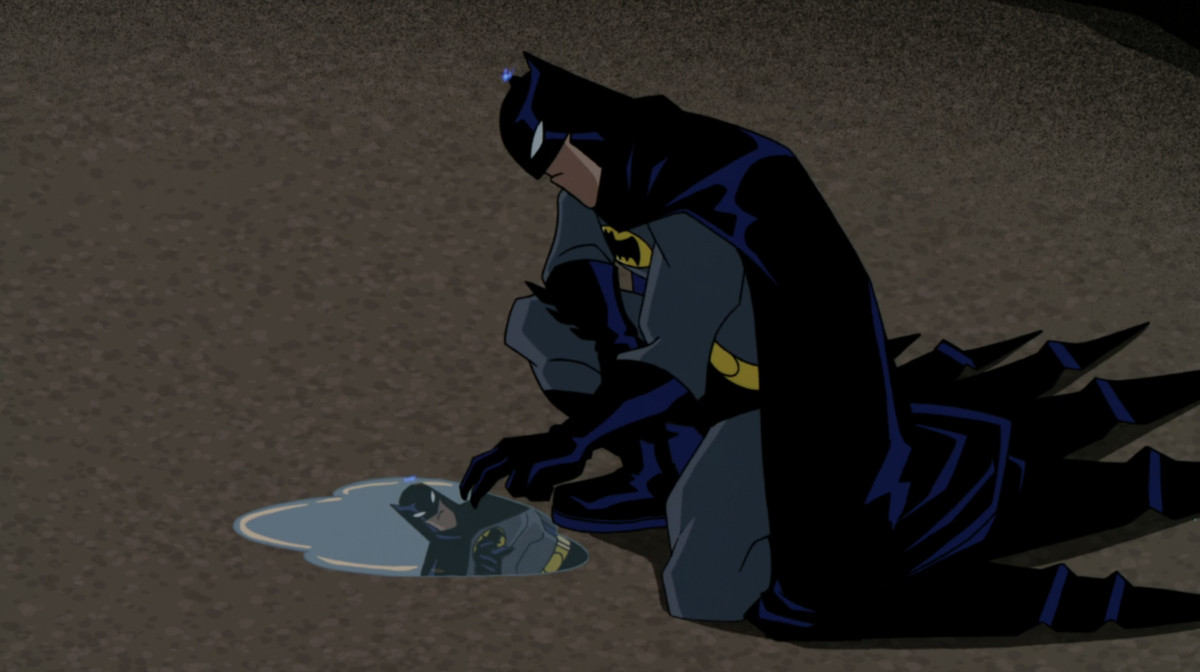
Image: Warner Bros

Photo: Jonathan Olley/Warner Bros. Pictures
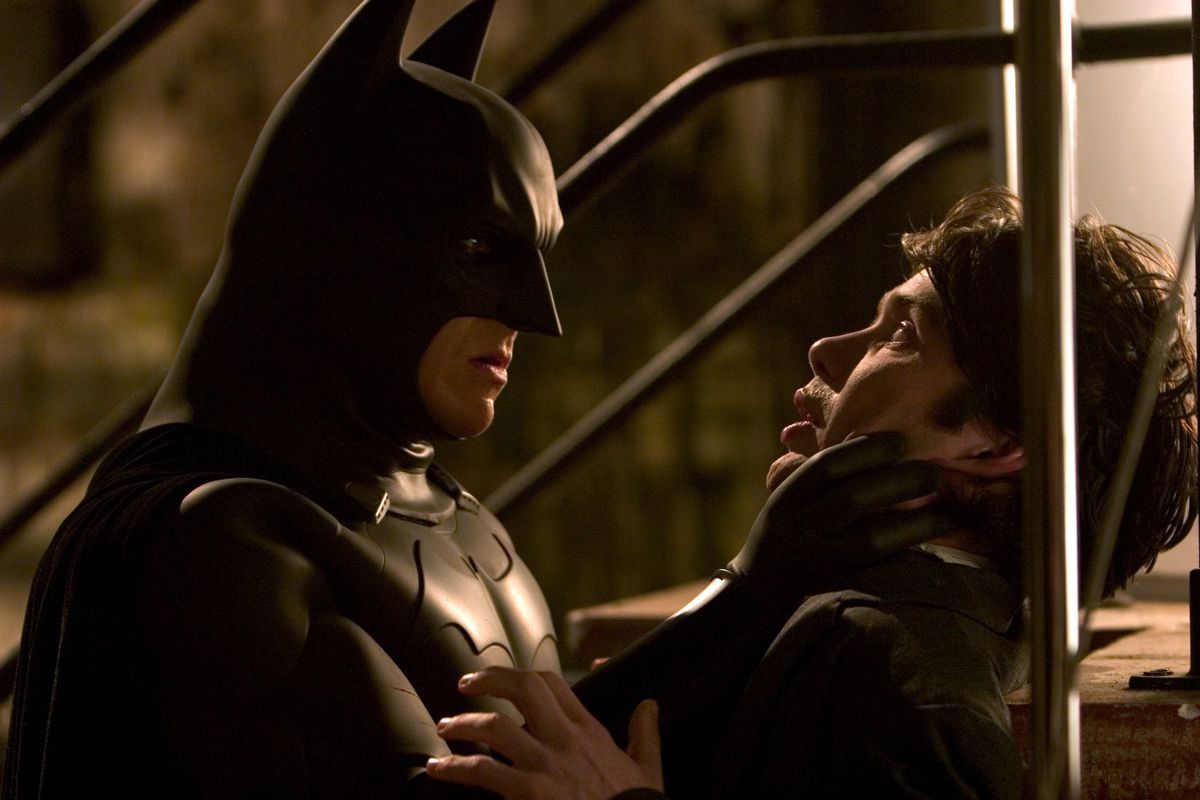
Image: Warner Bros.
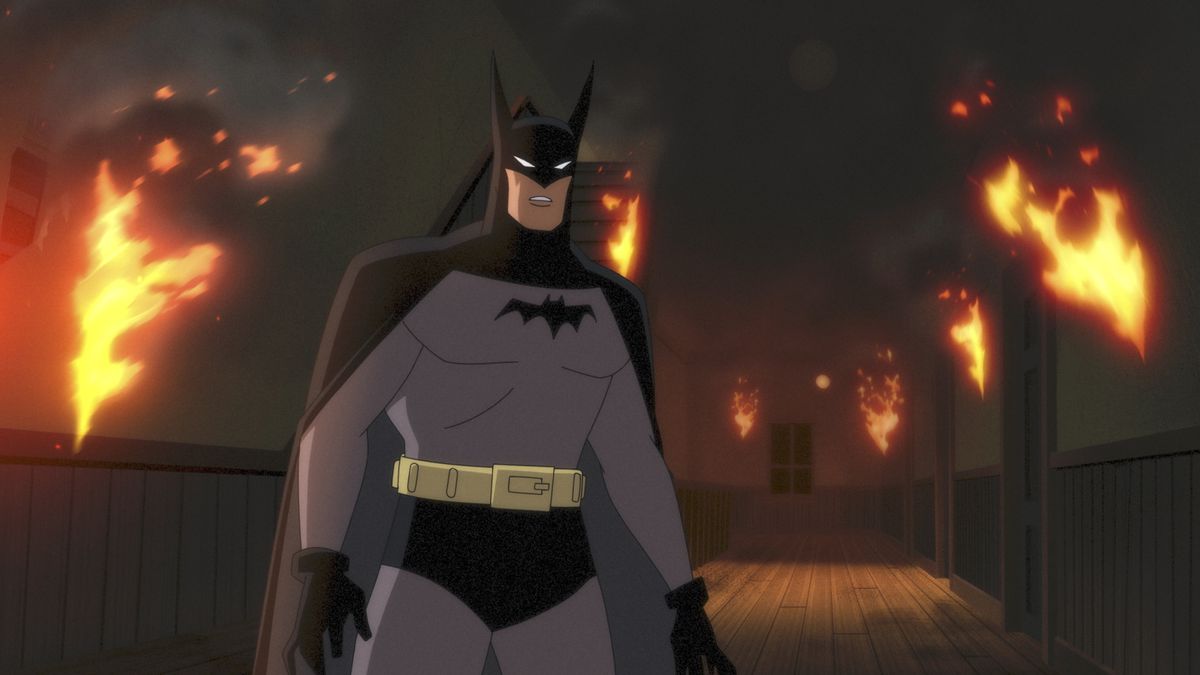
Image: Prime Video
All of which is to say that the urge to embrace BVTMAN RETVN as a guiding philosophy is understandable, but that doesn’t mean it’s advisable. For everyone involved with these movies and shows, up to and including Caped Crusader, gazing forever at variations on the same stories, the same aesthetics, and the same eras means ceaseless returning into the same golden, lost moment of our vanished youths. That’s as true for us as it is for Bruce Timm or, for that matter, for Batman himself. Caped Crusader is a show about a grown adult trapped forever in a child’s costume fantasy because of a single, painful moment of his vanished youth. And on the other side of the TV screen is Batman.
But not everyone is looking backward. Last summer, Teenage Mutant Ninja Turtles: Mutant Mayhem grossed a respectable $118.6 million in its domestic box office, hardly earth-shaking (though more impressive given its release in the midst of a then-ongoing actors’ strike), but enough to secure a sequel, a spin-off television series, and a billion-dollar horde of action figures, cereal boxes, and assorted licensed products.
Of all the comic and cartoon franchises of millennial vintage, the Ninja Turtles have always been the most surprising and the least predictable. Born in 1984 as a semi-serious lark of a black-and-white comic series by cartoonists Kevin Eastman and Peter Laird, the characters have since metastasized into an ongoing chain of cartoons, live action films, and comic book reboots virtually without interruption in their cycles of regeneration. What remains remarkable about the Turtles is that each new step in this evolutionary process is seemingly unconcerned with those before: the radical transformation from, say, the current IDW comic book series to Mutant Mayhem is no more dramatic than that from Eastman and Laird’s original creation to the beloved/mortifying 1987 syndicated cartoon.
In an interview with the website ET ahead of the release of Mutant Mayhem, actor Brady Noon, who played Raphael in the movie, stressed the emphasis that director Jeff Rowe and co-writer/producer Seth Rogen placed on deferring to their younger actors to guide the movie. “I think it was so important that the freedom that Jeff and Seth gave us and kind of the trust that they put into us being like, ‘I think these kids know the generation better than we do as older men,’” Noon said. “I think that was really important that we just had that trust and [knew] certain slangs that we can put into the film to make it better understanding for our generation.”
That’s not to say Rogen and co. actively ignored the siren song of nostalgia — speaking with Polygon, Rogen (himself an early millennial) recalled his fond early memories of cracking open Turtles toys. It’s just that they made no effort to chase after those memories at the expense of younger and newer viewers who had never known the characters at all. That’s what made the movie feel, even to seasoned viewers, so interestingly fresh. The Ninja Turtles happily shunned their original, aging market and so, paradoxically, managed to win them over again.
I guess what I’m trying to say is that this new Batman cartoon could use a little more Ninja Turtles in it. For that matter, so could my whole generation. Looking backward has given us some very fun, nostalgic culture, but it’s given us an awful lot of exhaustion, too. And maybe worse: the longer we keep chasing after the world the way we remember it (or think we do), the easier it becomes to put off making something new and vital that builds on our collective pasts, rather than simply pining for them. Nostalgia is comforting, but it’s the comfort of surrender. Even after all this time, we’re still too young for that.
But I’m not too worried about it, really. The other day my mother sent me an unexpected email with a photo attached. It showed the kid of one of her friends, age 9, dressed up as a Ninja turtle by way of a ribbon around his head and a green spray-painted aluminum roasting pan strapped to his back. “I wish we were this creative when you were his age,” she wrote.






